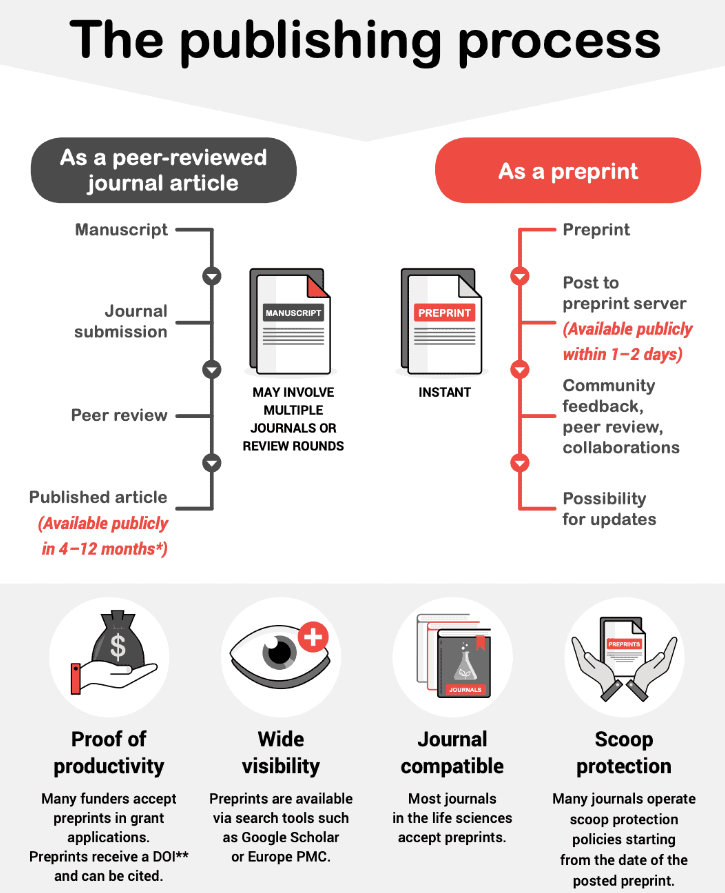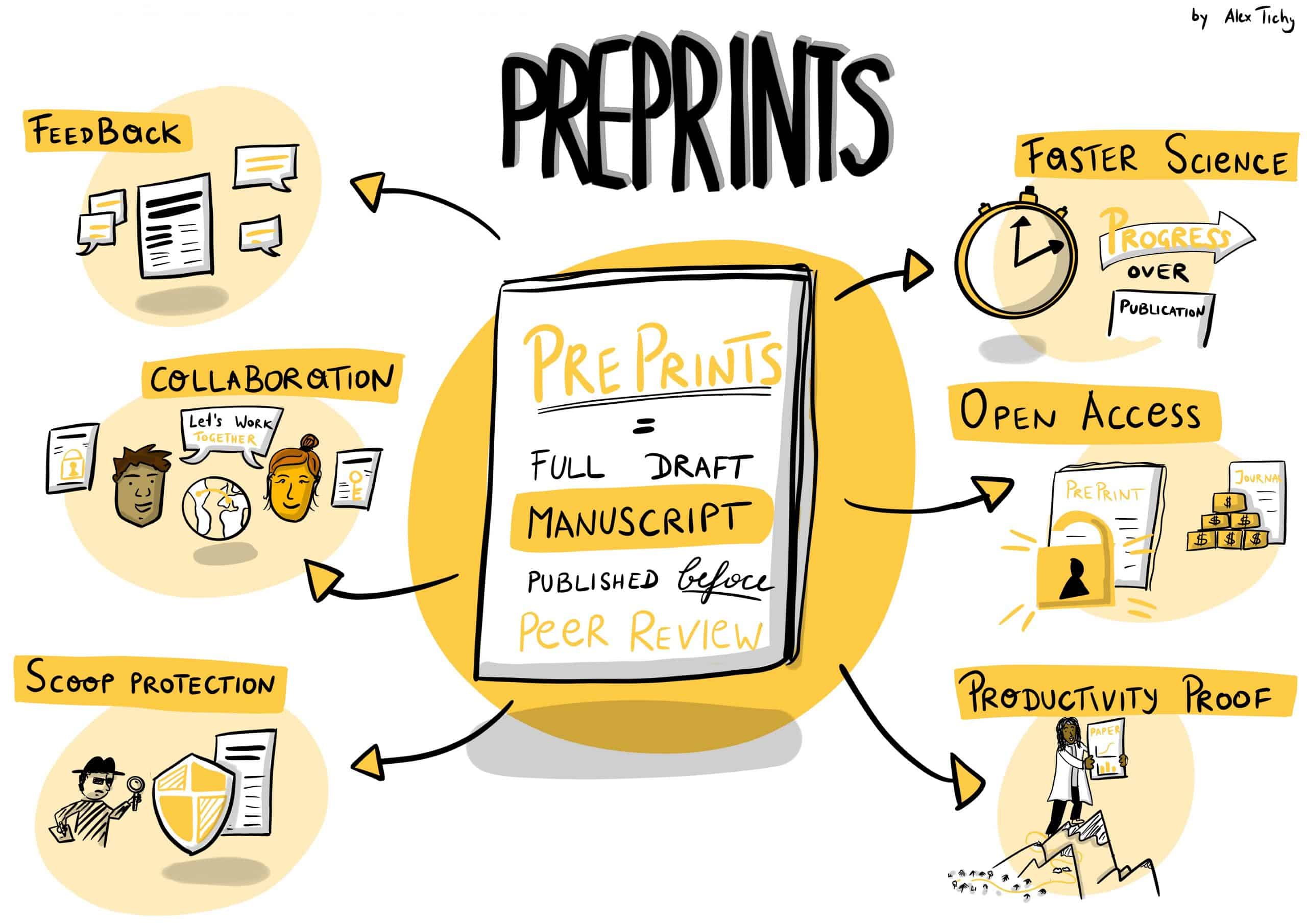A preprint is the version of the article before peer review.
You can share your preprint on a preprint server or repository even before you have submitted it to a journal. Before you share a preprint, check if the journal allows sharing of preprints via Sherpa Romeo.
Why should I share a preprint?
You can immediately share a preprint, instead of waiting for the review/publishing process.
Preprinted articles have increased citations of the published versions, because people are able to read your work earlier and incorporate it.
Preprints are openly accessible, without fees for readers and authors
Preprints provide evidence of productivity (Instead of adding papers that are still under review to your CV)
You can establish priority via preprints
Preprint servers also allow for sharing of negative/inconclusive results, or other work not intended to be submitted for journal publication (such as open letters)
posting a preprint is associated with higher social media attention (Fraser et al., 2020; Fu & Hughey, 2019; Serghiou & Ioannidis, 2018).
Some journals have appointed designated ‘preprint editors’ who scout the latest research posted at preprint servers and invite submissions to their journal (Puebla et al. 2021).
Preprints allow for feedback at a stage where this can still be incorporated
Accelerated speed of scientific discovery and prevention of duplication of research efforts
Where to share a preprint?
Terminology
Preprint: version of the article before peer review
Post-print (or Author Accepted Manuscript - AAM): version of the article after peer review
Publishers version (Version of Record - VOR): fully formatted version published by the publisher


